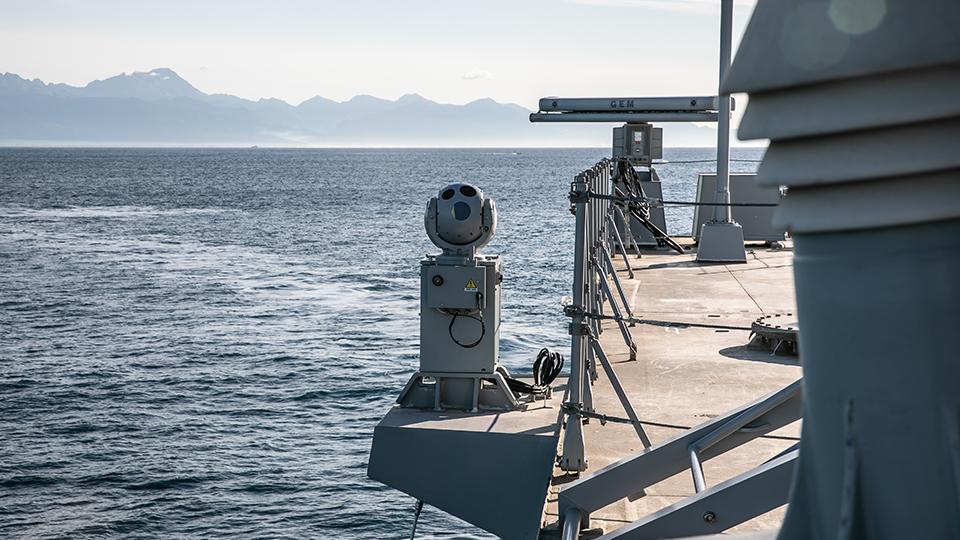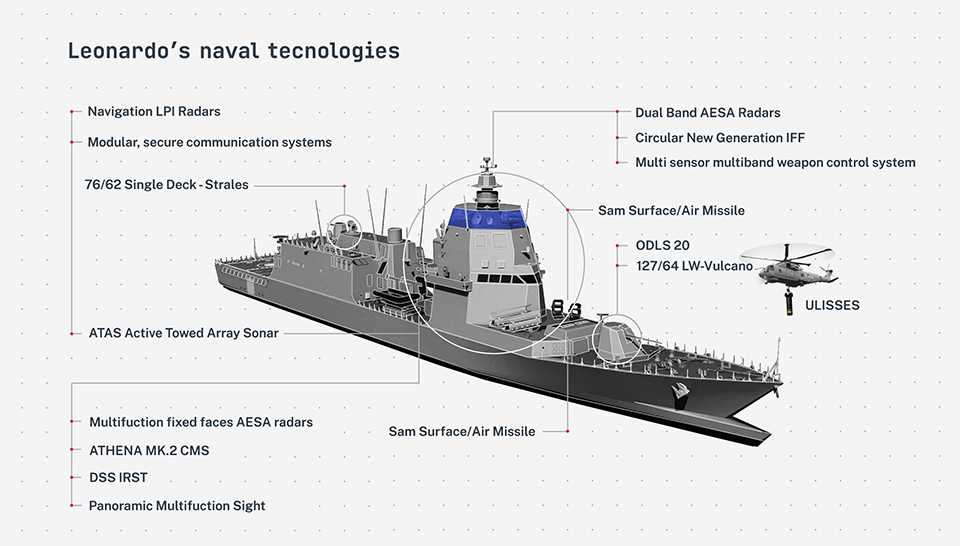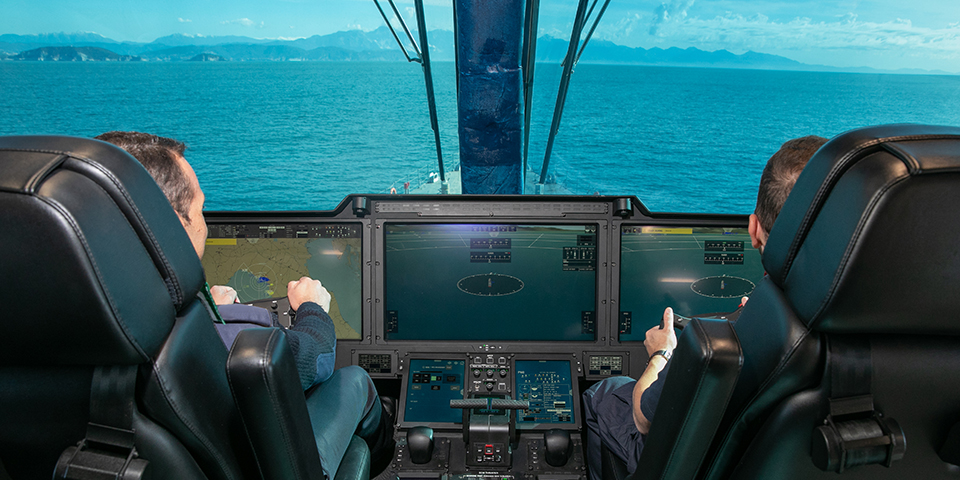ATHENA’s second big revolution is the graphic interface of the Command and Control (C2) system. This is optimised to be quickly usable and intuitive, requiring minimal training for effective use thanks to an extensive implementation of “wizard” procedures.
Developed in cooperation with the Armed Forces, Leonardo’s CMS enables reduced lead times for more complex operations, boosting a ship’s reactivity in complex tactical situations. A CMS of this capability is naturally also designed to be integrated with the entire range of sensors in the company’s portfolio, for example radar, another sector in which Leonardo is rapidly expanding with new-generation products. The spearhead of this is the KRONOS family, in which the KRONOS DUAL BAND (C- and X-band) and the POWER SHIELD (in “full digital” L e band) stand out. These were developed under the so-called Naval Law, the Italian navy’s modernisation programme, for new naval units such as the PPA and the LHD TRIESTE. These high-performance sensors are based on the successful KRONOS GRAND NAVAL with rotating antenna, already installed for some time on the BERGAMINI-class frigates, which has already demonstrated the ability to track even short-range ballistic missiles at distances of 300 km. The new sensors will have even more complex challenges in the future - long-range ballistic missiles, hypersonic missiles and saturation attacks – but will nonetheless be able to tackle these with optimal efficiency thanks to their state-of-the-art technology and the ability of ATHENA CMS to manage them effectively. Leonardo’s expertise in the sector also covers fire control radars, notably the NA-30S MK2, which have the ability to guide DART 76 and VULCANO guided munitions for 76 mm and 127 mm guns and more besides.

The list goes on, with Leonardo’s expertise also including naval optronic systems for fire control and surveillance, an increasingly indispensable complementary technology to counter sea-skimming and short-range threats. In line with Leonardo’s flexible technology approach, these devices can also be fully integrated into ATHENA. The MEDUSA MK.4, JANUS-N and SASS (Silent Acquisition & Surveillance System) systems are already installed on board many naval units, from the simplest types such as patrol boats to the most complex vessels like aircraft carriers and amphibious assault ships. The company is also developing new systems to provide ships with complete, all-round situational awareness.

In the underwater arena, in addition to the latest generation of light and heavy torpedoes - designed for the requirements of craft ranging from small anti-submarine units to new-generation submarines – sonar systems (ATAS, BLACK SNAKE, THESAN, ULISSES) and anti-torpedo countermeasures also deserve a mention.
Leonardo plays a leading role in sonar technology, with innovative systems that combine high-level performance with physical compactness and are among the lightest in the sector. In particular, the ATAS is now the lightest variable-depth sonar for active and passive detection, which can be installed on ASW (Anti Submarine Warfare) frigates and corvettes. Research in the underwater field does not stop at hardware components but also covers all discovery algorithms, now developed in-house.
As regards countermeasures, over the years Leonardo has leveraged its 100 years’ experience in torpedo development to optimise the MJTE active systems, NATO-standard ‘cartridges’ that can be launched from any DLS (Decoy Launching System). These can reproduce a ship’s sound profile and distract incoming threats with a market-leading level of effectiveness.
Still on the subject of weapons systems, in addition to the already mentioned 76/62 and 127/64 – representing the state of the art in medium and large naval calibres - Leonardo has always pursued continuous innovation in small calibres, from the Lionfish 12.7 to the Marlin 30 and 40, available in different solutions. These come with their own FCS (Fire Control System), a crucial aspect for any naval units - generally those with low displacement – that lack this component.

Finally, Leonardo has also carved out a prominent position in the naval communications sector with its VHF and HF equipment, software-defined radios and Link-16 and Link-22 tactical links. The new challenges posed by anti-satellite weapons and new electronic warfare techniques are nonetheless driving further research, especially in the HF sector and the field of datalinks, including the Link-LEO which allows for a proprietary and completely independent datalink. All communication solutions come with a dedicated management system that continually interfaces with ATHENA.
With the big data, AI, supercomputing and cloud computing revolutions upon us, Leonardo has already set up multidisciplinary study groups and devotes specific resources to internal projects. New skills are also arriving thanks to its relationship with promising start-ups and dedicated incubators, such as the BIF (Business Innovation Factory) created in partnership with LVenture Group, which will see the emergence of around thirty new high-tech start-ups within three years.






